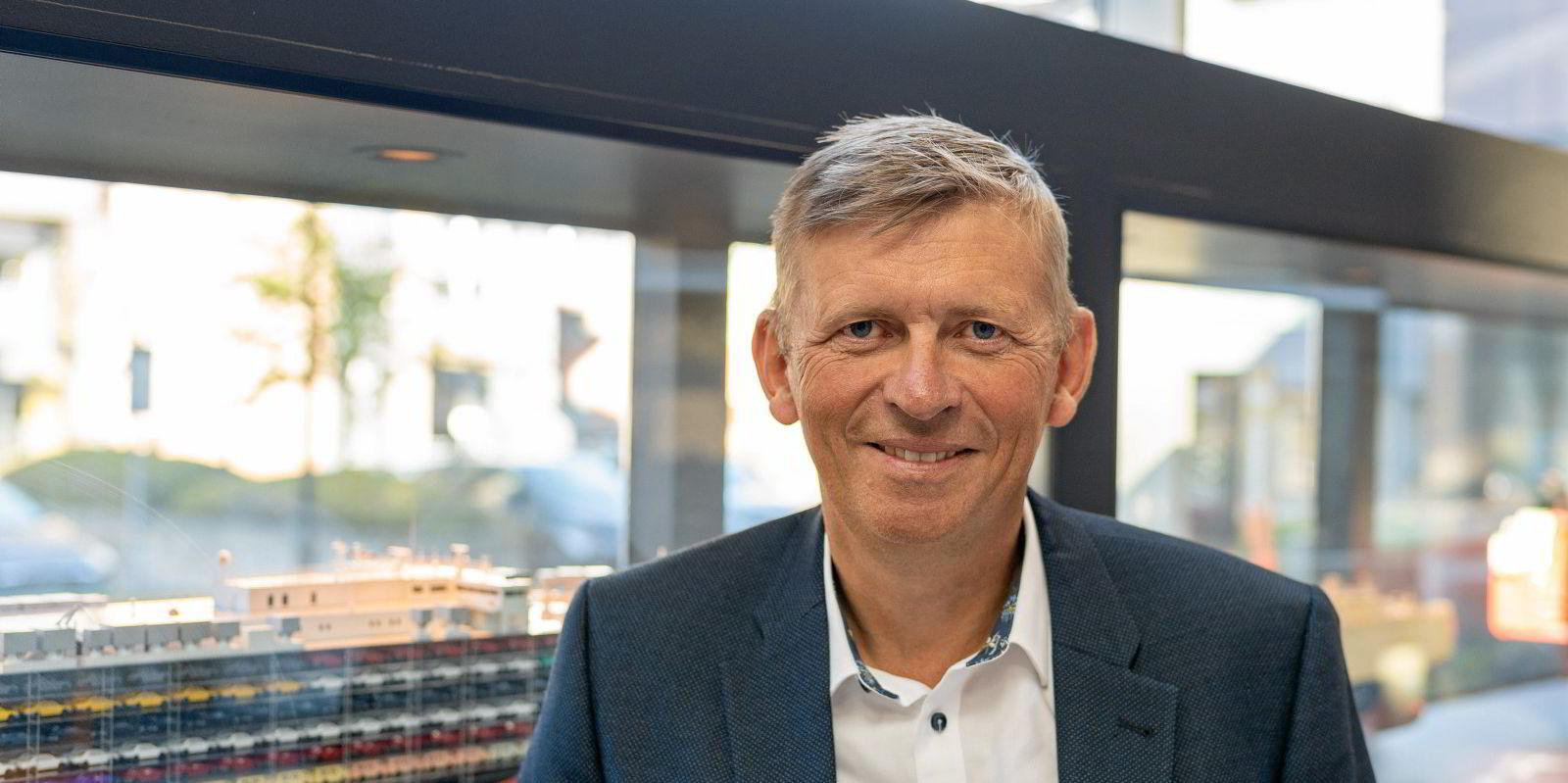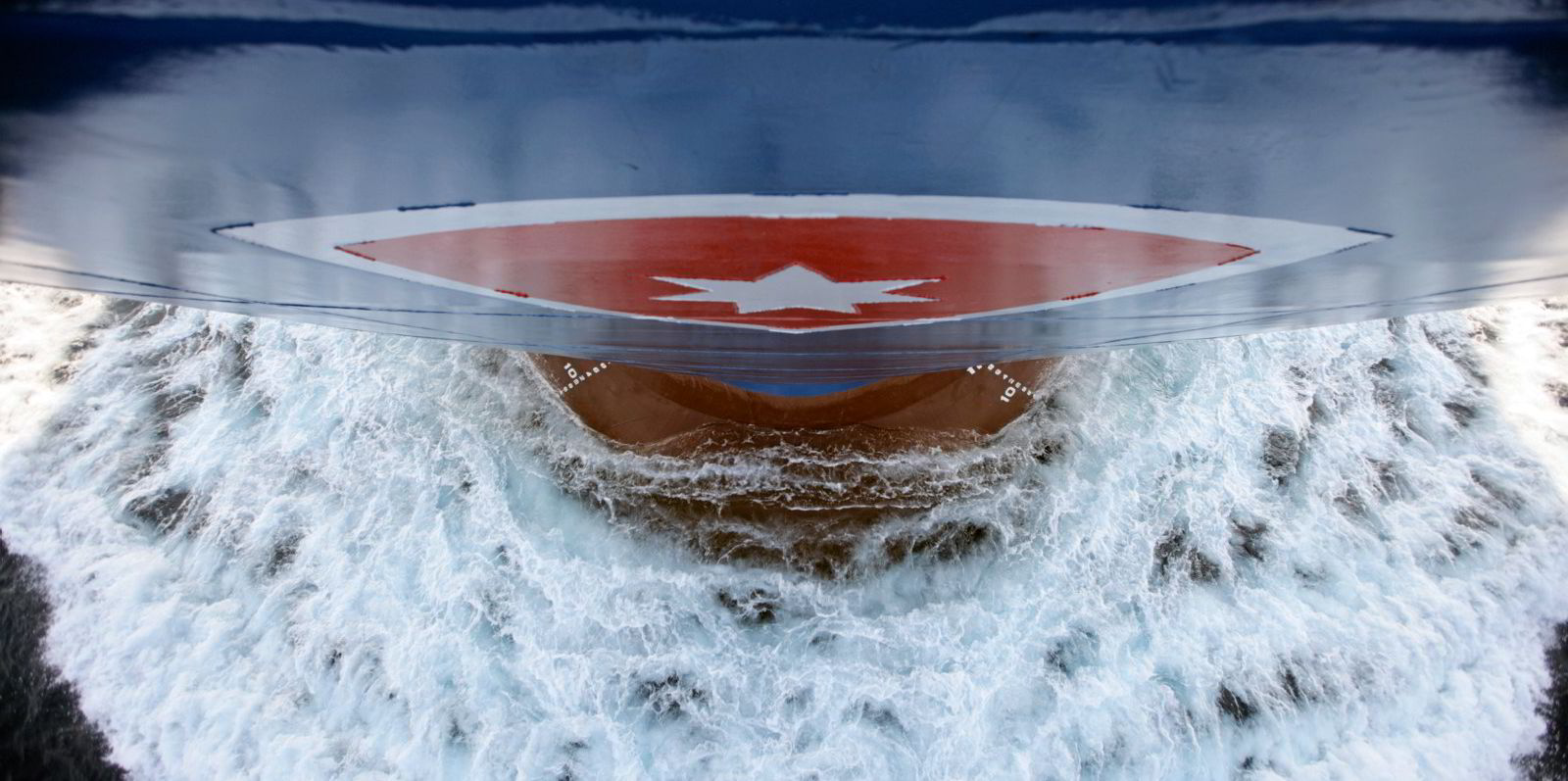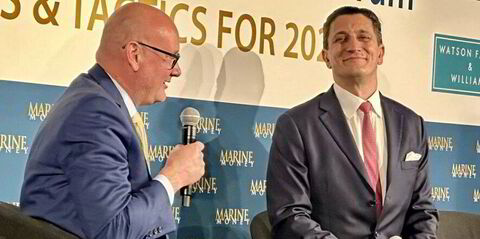Software will now tell Wallenius Wilhelmsen masters how to set engine power and plot voyage routes on their vessels, as artificial intelligence (AI) takes charge of a major global shipowner’s fleet.
The ongoing fleetwide roll-out is meant to help achieve the company’s targeted 27.5% reduction in emissions by 2030, with half to come from existing vessels.
Many owners and third-party providers are at work on vessel optimisation projects but Wallenius Wilhelmsen officials who developed the project together with Greece’s DeepSea Technologies say this step is a first for a global owner.
Geir Fagerheim, Oslo-based senior vice president for marine operations at Wallenius Wilhelmsen, said: “There was no one for us to turn to teach us how to do this.”
Fagerheim said that following a trial on four selected vessels, the ambition is to up that to 65 owned ships this year and extend that during 2023 to another 55 to 60 vessels, including chartered-in ships.
During the trial period, the idea met with some resistance within the fleet. But two enthusiastic early adopters — Captain Ashlyn Misquitta of the 8,000-ceu Thermopylae (built 2015) and Captain Dong Hun Park of Eukor’s 7,368-ceu Morning Peace (built 2017) — are now helping with the roll-out.
“We see them as critical ambassadors for the project,” Fagerheim said. “Masters listen to masters and not to office people, and the same goes for chief engineers.”
The goal is to achieve a 10% reduction in consumption across the fleet. The four-ship trial attained only about 7%.
“But that was partly based on a low level of compliance on board,” Fagerheim said.
The system relies on a standardised series of sensors that feed into one computer on each ship serving as a “data acquisition unit”, which streams data collected on board to servers running DeepSea’s AI-based software. Every eight hours, a ship receives updated detailed directions for optimised route, speed and engine power based on technical vessel information plus weather, waves and currents.
“The purpose is to create a sailing profile that gives the lowest consumption by a specified arrival time,” Fagerheim said.
A ship’s crew would be unable to puzzle it all together manually.
“No human being, no matter how many years of experience they have, can compete with these automated sailing instructions,” he said. “It reduces emissions, it reduces fuel consumption and it increases safety during operation. In aviation, crews haven’t made their own flight plans for years, but we are still doing that on ships.”
In cases where masters disagree with the digital results, they can still notify Wallenius Wilhelmsen vessel operators in Stockholm and Seoul and make their own decisions.
“The crew is still in command,” Fagerheim said.
The DeepSea AI project rests on the foundation of an on-board digital infrastructure project that Wallenius Wilhelmsen has spent four years building with the help of Raa Labs, a technology subsidiary of Wallenius Wilhelmsen shareholder Wilh Wilhelmsen. That project upgraded, corrected and standardised the system of sensors throughout the fleet.
Before the Raa Labs digital infrastructure project, the problem was the lack of an integrated system to manage uniform data, as well as the lack of software powerful enough to get the maximum benefit out of it. Collection and reporting were still manual.
Lack of data was not the issue.
“At the point when we started the project, there was too much,” Fagerheim said. “There were up to 10,000 data points being collected on old ships. It was a jumble and there was no way to integrate it. For this machine learning system, only 19 data points are needed to predict the required engine power to achieve a certain speed.”
The next step, forseen for 2023 depending on classification society approvals, could be using AI to control engine speeds remotely, but that is not part of the current rollout. For now, Fagerheim said the AI-calculated optimal routes speeds and engine power setting remain a “decision support tool” for the master.
The fleetwide programme could provide a foundation for autonomous shipping one day, but Fagerheim said masters will still be in control for the foreseeable future, not just because of technological challenges.
“The way we see autonomous technology is that it is very difficult to adapt to local regulations around the globe, in the 70 or so jurisdictions where we operate,” he said. “But we see this as paving the way towards selective automation.”




